Uttarakhand after Monsoon is a sight to behold, known as the “Land of the Gods,” this beautiful state in northern India is full of stunning nature, spiritual places, and diverse landscapes. While famous spots like Nainital, Mussoorie, and Rishikesh are always popular, there are some hidden gems in Uttarakhand that become magical after the monsoon.
When the rains stop, the hills turn lush green, rivers become lively, and the misty air adds a mysterious charm to the already amazing scenery. If you love adventure or nature and want to explore unique places, here are 7 Hidden Gems in Uttarakhand after Monsoon you must visit.
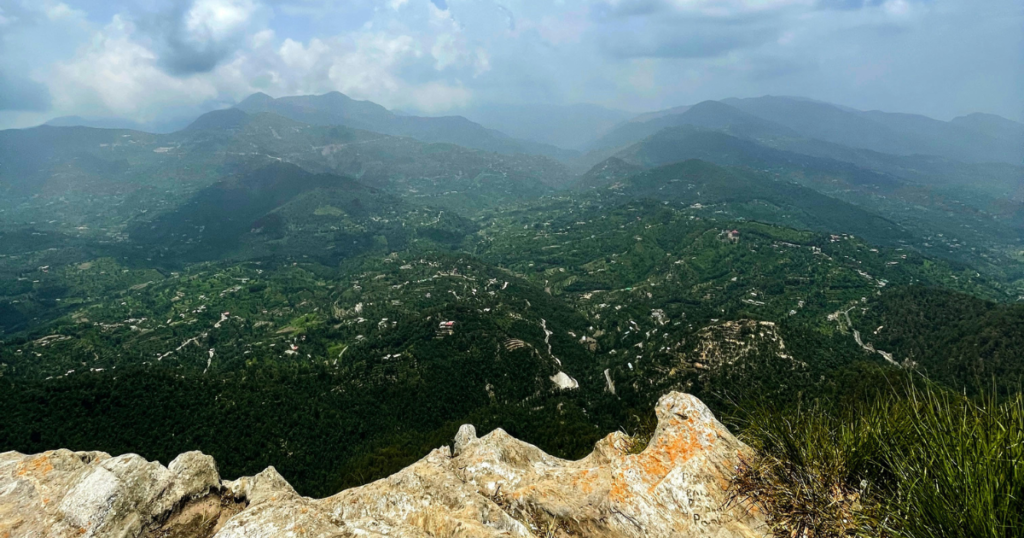
7 Hidden Treasures in Uttarakhand after Monsoon
1. Chopta: The Mini Switzerland of India
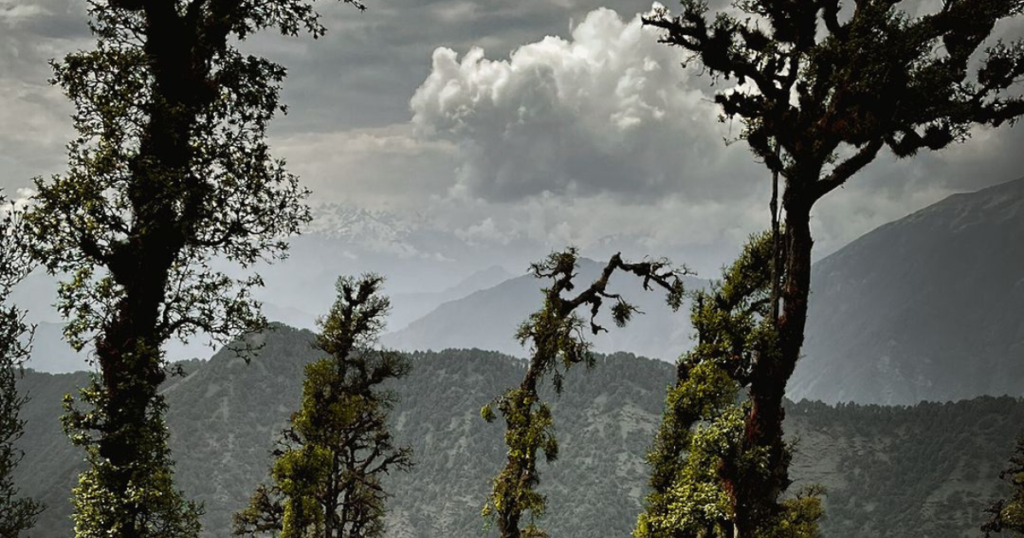
Chopta, in the heart of Uttarakhand, is often called the “Mini Switzerland of India” because of its stunning landscapes and lush greenery. After the monsoon, Chopta turns into a green paradise, making it one of the hidden treasures to explore in Uttarakhand after Monsoon. The area is filled with rolling meadows, dense forests, and amazing views of the Himalayan peaks.
It’s a peaceful escape for nature lovers and adventure seekers. The calm and untouched beauty of Chopta makes it a perfect spot for those looking for peace and a deep connection with nature.
Best time to Visit Chopta
- March to May (Spring): The weather is pleasant with temperatures ranging from 10°C to 24°C. The clear skies and blooming flowers make it an ideal time for trekking and sightseeing.
- September to November (Autumn): The post-monsoon period offers lush greenery and clear views of the Himalayan peaks. The temperatures range from 15°C to 25°C, making it perfect for outdoor activities.
- Post-monsoon period for lush greenery: The landscape is rejuvenated with fresh foliage, and the weather is cool and comfortable, ideal for nature walks and photography.
How to reach Chopta
- By Air: The nearest airport is Jolly Grant Airport in Dehradun, approximately 221 km away. From the airport, you can hire a taxi or take a bus to reach Chopta.
- By Train: The nearest railway station is Haridwar, around 194 km from Chopta. From Haridwar, you can take a taxi or a bus to reach your destination.
- By Road: Chopta is well-connected by road. Regular buses and taxis are available from major cities like Rishikesh and Haridwar. The drive offers scenic views of the mountains and valleys.
Places to visit in Chopta
- Tungnath Temple: The highest Shiva temple in the world, located at an altitude of 3,680 meters. It is a significant pilgrimage site and offers stunning views of the surrounding peaks.
- Chandrashila Peak: A popular trekking destination, Chandrashila offers a panoramic view of the Himalayas. The trek is relatively easy and suitable for beginners.
- Deoria Tal: A serene lake located at an altitude of 2,438 meters. It is known for its crystal-clear water and the reflection of the surrounding mountains.
- Kedarnath Wildlife Sanctuary: Home to a variety of flora and fauna, including the endangered musk deer. It is a great place for wildlife enthusiasts and nature lovers.
Things to do in Chopta
- Trekking to Tungnath and Chandrashila: The trek offers breathtaking views and a chance to explore the rich biodiversity of the region.
- Camping amidst nature: Set up camp in the lush meadows and enjoy the tranquility of the surroundings. It’s a perfect way to connect with nature.
- Bird watching: Chopta is a haven for bird watchers, with a variety of species to spot, including the Himalayan Monal.
- Stargazing: The clear skies and minimal light pollution make Chopta an excellent spot for stargazing. Witness the beauty of the night sky and the Milky Way.
2. Munsiyari: The Little Kashmir
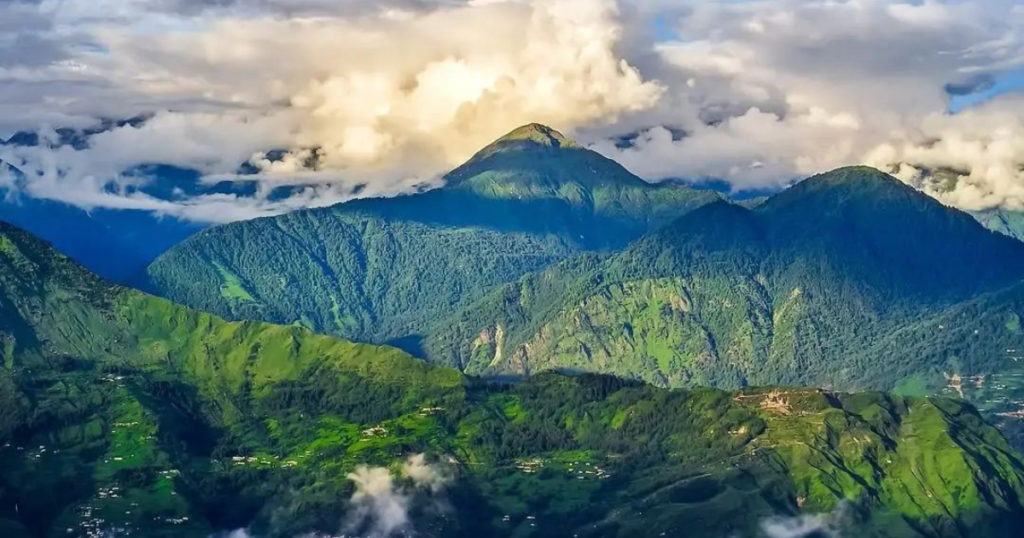
Munsiyari, known as “The Little Kashmir,” is a charming village in the Pithoragarh district of Uttarakhand. This peaceful place is surrounded by the stunning snow-covered peaks of the Himalayas, offering amazing views and a calm atmosphere.
After the monsoon, Munsiyari turns into a green paradise, making it one of the hidden treasures to explore in Uttarakhand after Monsoon. The area is famous for its rich culture, lively local traditions, and beautiful nature, making it a perfect getaway for nature lovers and adventure seekers.
Best time to Visit Munsiyari
- March to May (Spring): The weather is pleasant with temperatures ranging from 15°C to 30°C, making it ideal for trekking and sightseeing.
- September to November (Autumn): The post-monsoon period offers clear skies, lush greenery, and temperatures ranging from 10°C to 25°C, perfect for outdoor activities.
- Post-monsoon period for lush greenery: The landscape is rejuvenated with fresh foliage, and the weather is cool and comfortable, ideal for nature walks and photography.
How to reach Munsiyari
- By Air: The nearest airport is Pantnagar Airport, approximately 249 km away. From the airport, you can hire a taxi or take a bus to reach Munsiyari.
- By Train: The nearest railway stations are Kathgodam (275 km) and Tanakpur (286 km). From these stations, you can take a taxi or a bus to reach Munsiyari.
- By Road: Munsiyari is well-connected by road. Regular buses and taxis are available from major cities like Delhi, Haldwani, and Almora. The drive offers scenic views of the mountains and valleys.
Places to visit in Munsiyari
- Panchachuli Peaks: A group of five snow-capped Himalayan peaks offering stunning views and a popular trekking destination.
- Khaliya Top: An easy 10 km trek from Munsiyari, offering panoramic views of the Himalayan ranges.
- Birthi Falls: A beautiful waterfall located 8 km from Munsiyari, perfect for a refreshing break.
- Nanda Devi Temple: A significant religious site offering 360-degree views of the Panchachuli peaks.
- Thamri Kund: A serene natural lake surrounded by alpine trees and home to musk deer.
Things to do in Munsiyari
- Trekking: Explore various trekking routes like the Milam, Ralam, and Namik Glaciers.
- Bird watching: Spot a variety of bird species, including the Himalayan Monal.
- Camping: Set up camp amidst nature and enjoy the tranquility of the surroundings.
- Stargazing: Witness the beauty of the night sky and the Milky Way with minimal light pollution.
READ ALSO:
I Spent 3D/2N in Nainital in Just Rs. 3000 | Complete Travel Guide
3. Binsar: A Wildlife Enthusiast’s Haven
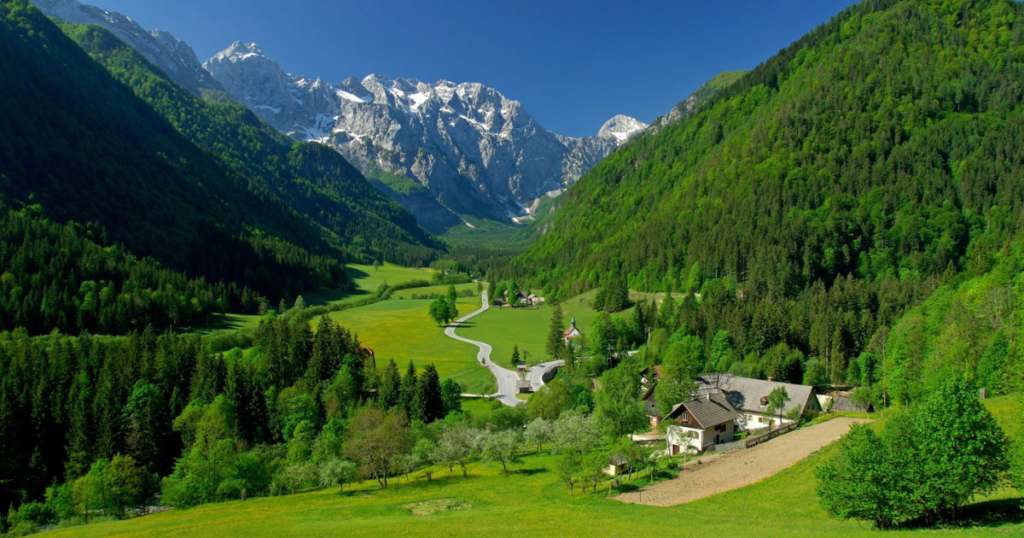
In the peaceful Kumaon region of Uttarakhand, Binsar is a hidden gem that turns into a green paradise after the monsoon. It’s a dream spot for wildlife lovers, offering a mix of rich biodiversity and stunning natural beauty. The Binsar Wildlife Sanctuary, home to many plants and animals, is a big draw for nature enthusiasts.
Exploring Binsar after the monsoon reveals a refreshed landscape. The sanctuary is covered in dense forests of oak, pine, and rhododendron, providing a perfect home for many bird species and wildlife, including leopards, deer, and the Himalayan black bear.
Best time to Visit Binsar
- April to June (Summer): Pleasant weather with temperatures ranging from 15°C to 30°C, ideal for trekking and sightseeing.
- September to November (Autumn): Post-monsoon period with clear skies and lush greenery, temperatures ranging from 10°C to 25°C.
- October to March (Winter): Crisp and clear views of the Himalayan peaks, with temperatures dropping to 0°C, perfect for experiencing snowfall.
How to reach Binsar
- By Air: The nearest airport is Pantnagar Airport, approximately 152 km away. Taxis are available from the airport to Binsar.
- By Train: The nearest railway station is Kathgodam, around 119 km from Binsar. From Kathgodam, you can hire a taxi or take a bus to reach Binsar.
- By Road: Binsar is well-connected by road. Regular buses and taxis are available from major cities like Delhi, Haldwani, and Almora. The drive offers scenic views of the mountains and valleys.
Places to visit in Binsar
- Binsar Wildlife Sanctuary: A haven for wildlife enthusiasts, offering a chance to spot leopards, deer, and numerous bird species.
- Zero Point: Located within the sanctuary, it offers panoramic views of the Himalayan ranges, including Nanda Devi, Kedarnath, and Trishul.
- Kasar Devi Temple: A serene temple known for its spiritual significance and stunning views.
- Bineshwar Mahadev Temple: An ancient temple dedicated to Lord Shiva, showcasing intricate stone carvings.
- Pariyadeva Pashan: An archaeological site with ancient stone carvings, offering a glimpse into the region’s history.
Things to do in Binsar
- Trekking: Explore various trekking routes within the sanctuary, offering breathtaking views and a chance to connect with nature.
- Camping: Set up camp amidst the lush forests and enjoy the tranquility of the surroundings.
- Paragliding: Experience the thrill of paragliding and enjoy a bird’s-eye view of the stunning landscapes of Binsar.
4. Pangot: A Birdwatcher’s Paradise
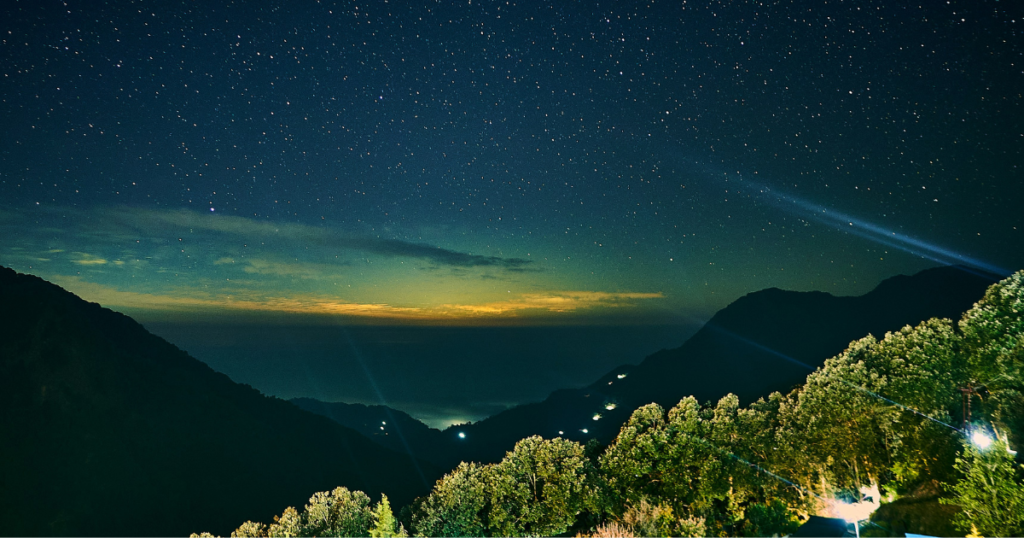
In the beautiful Kumaon region of Uttarakhand, Pangot is a peaceful village that turns into a green paradise after the monsoon. It’s a birdwatcher’s dream, with over 580 species of birds, making it a must-visit for nature lovers.
The dense forests of oak, pine, and rhododendron, along with the fresh, green landscape, make Pangot one of the hidden treasures to explore in Uttarakhand after Monsoon. The calm environment, filled with the sweet songs of birds, offers a perfect escape from the busy city life.
Best time to Visit Pangot
- Summer (April to June): Pleasant weather, ideal for outdoor activities like trekking and birdwatching. The temperature ranges from 15°C to 25°C.
- Monsoon (July to September): Lush greenery and blooming flowers, but trails can be slippery. The temperature ranges from 10°C to 18°C, and it’s a great time to enjoy the misty landscapes.
- Winter (October to March): Clear skies, perfect for birdwatching, but chilly evenings with temperatures dropping to as low as 0°C. Snowfall can be expected in December and January, adding a magical touch to the scenery.
How to reach Pangot
- By Air: The nearest airport is Pantnagar, 58 km away. Regular flights connect Pantnagar to Delhi. From the airport, you can hire a taxi to reach Pangot.
- By Train: Kathgodam Railway Station, 20 km away, is the nearest railhead. It is well-connected to major cities like Delhi, Lucknow, and Kolkata. From Kathgodam, you can take a taxi or a local bus to Pangot.
- By Road: Pangot is well-connected by road. You can drive from Delhi (approximately 340 km) via NH 24 and NH 87. Buses and taxis are available from major cities like Delhi, Nainital, and Haldwani.
Places to visit in Pangot
- Kilbury Bird Sanctuary: A haven for birdwatchers with over 580 species of birds. It’s a must-visit for anyone interested in ornithology.
- Naina Peak: Offers panoramic views of Nainital and the surrounding mountains. It’s the highest peak in Nainital and a popular trekking destination.
- Nainital Lake: Ideal for boating and scenic views. The lake is surrounded by hills and offers a tranquil escape.
- Snow View Point: Provides stunning vistas of snow-clad Himalayan peaks. It’s accessible by a cable car from Mallital.
- Tiffin Top (Dorothy’s Seat): Perfect for picnics and panoramic views. It’s a popular spot for photographers and nature lovers.
Things to do in Pangot
- Birdwatching: Spot over 580 species of birds, including rare and migratory species. Early mornings are the best time for birdwatching.
- Trekking: Explore trails to Naina Peak and Kilbury. The trails offer breathtaking views and a chance to experience the local flora and fauna.
- Camping: Enjoy the serene environment under the stars. There are several campsites that offer a rustic experience.
- Photography: Capture the stunning landscapes and wildlife. The diverse bird species and scenic beauty provide ample opportunities for photography.
- Nature Walks: Immerse yourself in the lush greenery. Guided nature walks are available to help you explore the local flora and fauna.
5. Kausani: The Switzerland of India
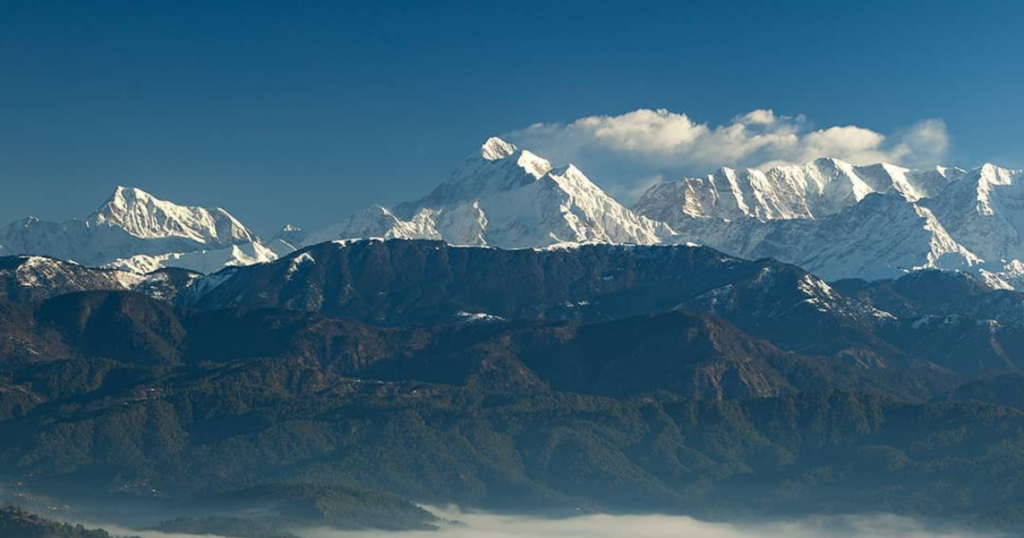
Kausani, sitting at 1,890 meters in the Bageshwar district, is often called the “Switzerland of India” because of its stunning views of the Himalayan peaks like Nanda Devi, Trishul, and Panchachuli. This peaceful hill station is a perfect getaway in Uttarakhand after Monsoon, with fresh landscapes, lush greenery, and clear skies. The post-monsoon season makes Kausani even more beautiful, making it an ideal spot for nature lovers and those seeking peace.
Best time to Visit Kausani
- Summer (March to June): Pleasant weather with temperatures ranging from 11°C to 25°C, ideal for sightseeing and outdoor activities.
- Monsoon (July to September): The region receives moderate to heavy rainfall, making the landscape lush and vibrant. However, be prepared for occasional landslides.
- Winter (October to February): Cold weather with temperatures dropping to as low as -5°C. This season offers stunning views of snow-capped peaks and is perfect for those who enjoy snowfall.
How to reach Kausani
- By Air: The nearest airport is Pantnagar, approximately 177 km away. Regular flights connect Pantnagar to Delhi. From the airport, you can hire a taxi to reach Kausani.
- By Train: The closest railway station is Kathgodam, around 142 km away. It’s well-connected to major cities like Delhi, Lucknow, and Kolkata. From Kathgodam, you can take a taxi or bus to Kausani.
- By Road: Kausani is easily accessible by road. You can drive from Delhi (around 401 km) via NH 24 and NH 109. Buses and taxis are also available from major cities like Delhi, Nainital, and Almora.
Places to visit in Kausani
- Anasakti Ashram: Also known as Gandhi Ashram, this place provides a peaceful environment for meditation and reflection.
- Rudradhari Falls and Caves: Located about 12 km from Kausani, this picturesque spot is perfect for nature lovers and trekkers.
- Kausani Tea Estate: Spread over 208 hectares, this tea estate offers guided tours and a chance to taste freshly brewed tea.
- Sumitranandan Pant Gallery: A museum dedicated to the renowned Hindi poet Sumitranandan Pant, showcasing his works and memorabilia.
- Baijnath Temple: An ancient temple complex around 20 km from Kausani, known for its exquisite architecture and historical significance.
Things to do in Kausani
- Trekking: Explore scenic trails leading to Pinnath, Rudradhari Falls, and other nearby spots.
- Stargazing: Visit the Starscapes Observatory for a mesmerizing view of the night sky.
- Birdwatching: Spot various Himalayan bird species in the lush forests around Kausani.
- Photography: Capture the stunning landscapes, especially the panoramic views of the Himalayan peaks.
- Shopping: Buy local handicrafts, woolen shawls, and organic tea from the local markets.
Important Tips
- Carry warm clothing, especially if visiting in winter.
- Book accommodations in advance during peak seasons to avoid last-minute hassles.
VISUAL STORY:
6. Peora: The Fruit Bowl of Uttarakhand
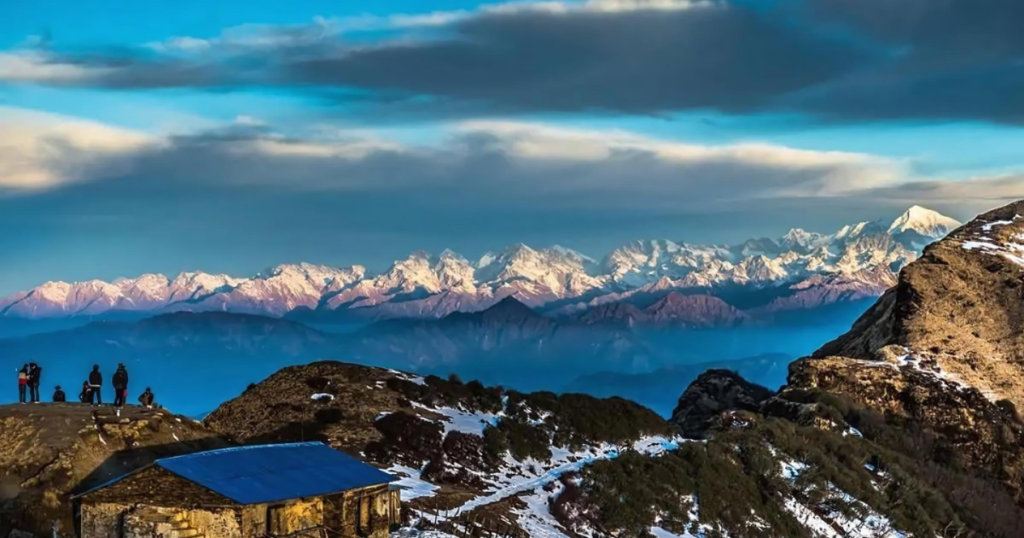
Peora, hidden in the Kumaon hills, is a beautiful village that truly shines in Uttarakhand after Monsoon. At 6,600 feet high, Peora is famous for its many orchards, growing fruits like apples, plums, peaches, and apricots. After the monsoon, this charming village comes to life with lush greenery and a refreshing atmosphere, making it a perfect retreat for nature lovers and those seeking peace. The calm environment, along with the charm of traditional Kumaoni houses, makes Peora a hidden treasure worth exploring.
Best time to Visit Peora
- Summer (April to June): Enjoy pleasant weather with temperatures between 15°C and 25°C, perfect for sightseeing and savoring the fruit harvest.
- Monsoon (July to September): The landscape becomes lush and vibrant, though you might encounter occasional rain showers. Temperatures range from 10°C to 18°C.
- Winter (October to March): Experience cold weather with temperatures dropping to as low as 0°C. Clear skies provide stunning views of the snow-capped Himalayas, making it a great time for those who love a chilly climate.
How to reach Peora
- By Air: The nearest airport is Pantnagar, about 77 km away. Regular flights connect Pantnagar to Delhi. From the airport, you can hire a taxi to reach Peora.
- By Train: The closest railway station is Kathgodam, around 58 km away. It’s well-connected to major cities like Delhi and Kolkata. From Kathgodam, you can take a taxi or bus to Peora.
- By Road: Peora is easily accessible by road. You can drive from Delhi (about 350 km) via NH 24 and NH 109. Buses and taxis are also available from major cities like Delhi, Nainital, and Almora.
Places to visit in Peora
- Mukteshwar: Located about 10 km away, it offers stunning views of the Himalayas and is home to the Mukteshwar Temple.
- Almora: Approximately 23 km away, this town is known for its cultural heritage and scenic beauty.
- Binsar Wildlife Sanctuary: A haven for wildlife enthusiasts, located around 30 km from Peora.
- Jageshwar: Famous for its ancient temples, located about 65 km from Peora.
- Chauli Ki Jali: A popular spot near Mukteshwar for rock climbing and rappelling.
Things to do in Peora
- Fruit Picking: Enjoy picking fresh fruits from the orchards.
- Trekking: Explore the scenic trails around Peora, offering breathtaking views of the Himalayas.
- Birdwatching: Spot various Himalayan bird species in the lush forests.
- Photography: Capture the stunning landscapes and traditional Kumaoni architecture.
- Nature Walks: Immerse yourself in the serene environment with guided nature walks.
7. Khirsu: A Tranquil Retreat
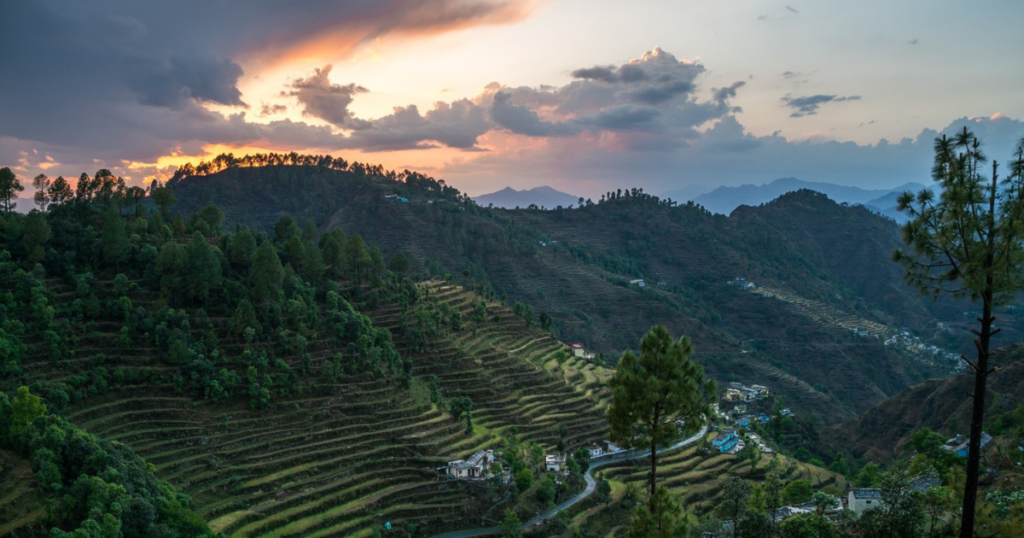
Nestled in the serene Pauri Garhwal district, Khirsu is a hidden gem that offers a peaceful escape in Uttarakhand after Monsoon. At 1,700 meters high, this charming village is surrounded by lush forests of pine, deodar, and oak, giving stunning views of the snow-covered Himalayan peaks. After the monsoon, Khirsu turns into a green paradise, making it a perfect spot for those seeking peace and natural beauty. The village’s charm lies in its simplicity and untouched beauty, making it an ideal retreat for nature lovers and peace seekers.
Best time to Visit Khirsu
- Summer (April to June): Enjoy pleasant weather with temperatures between 15°C and 25°C, perfect for sightseeing and outdoor activities.
- Monsoon (July to September): The landscape becomes lush and vibrant, though you might encounter occasional rain showers. Temperatures range from 10°C to 18°C.
- Winter (October to March): Experience cold weather with temperatures dropping to as low as 0°C. Clear skies provide stunning views of the snow-capped Himalayas, making it a great time for those who love a chilly climate.
How to reach Khirsu
- By Air: The nearest airport is Jolly Grant Airport in Dehradun, about 145 km away. Regular flights connect Jolly Grant to Delhi. From the airport, you can hire a taxi to reach Khirsu.
- By Train: The closest railway station is Rishikesh, around 132 km away. It’s well-connected to major cities like Delhi and Kolkata. From Rishikesh, you can take a taxi or bus to Khirsu.
- By Road: Khirsu is easily accessible by road. You can drive from Delhi (about 330 km) via NH 34 and NH 534. Buses and taxis are also available from major cities like Delhi, Rishikesh, and Pauri.
Places to visit in Khirsu
- Ghandiyal Devta Temple: An ancient temple dedicated to Lord Ghandiyal, offering a serene environment for meditation and reflection.
- Kyunkaleshwar Mahadev Temple: A significant religious site located nearby, known for its spiritual ambiance and historical significance.
- Pauri: A nearby town offering panoramic views of the Himalayas and several tourist attractions.
- Dhari Devi Temple: Located on the banks of the Alaknanda River , this temple is known for its spiritual significance and scenic beauty.
- Deval Garh: An ancient fort and temple complex offering a glimpse into the region’s rich history and culture.
Things to do in Khirsu
- Nature Walks: Wander through the lush forests of pine, deodar, and oak, and soak in the peaceful surroundings.
- Birdwatching: Spot a variety of Himalayan bird species in the dense forests around Khirsu.
- Trekking: Enjoy scenic treks to nearby places like Pauri and Ulkha Giri.
- Photography: Capture the stunning landscapes and traditional architecture of the village.
- Village Tourism: Experience the rustic charm and warm hospitality of the local Garhwali people.
Conclusion
Uttarakhand is a land of hidden treasures waiting to be explored. Uttarakhand after Monsoon becomes lush and vibrant, making these offbeat destinations the perfect escape from the hustle and bustle of city life. Whether you’re a nature lover, adventure enthusiast, or history buff, Uttarakhand has something for everyone. So pack your bags, put on your trekking shoes, and get ready to unveil the hidden treasures of Uttarakhand after Monsoon.
FAQ’s
What are the best hidden destinations to visit in Uttarakhand after the monsoon?
After the monsoon, some of the best hidden destinations in Uttarakhand include Kausani, Patal Bhuvaneshwar, Abbott Mount, Khirsu, Kanatal, Munsiyari, and Chakrata.
Why is Kausani referred to as the “Switzerland of India”?
Kausani is called the “Switzerland of India” due to its panoramic views of the Himalayan peaks, lush pine forests, and tea gardens, which resemble the scenic beauty of Switzerland.
How can I reach Abbott Mount, and what can I do there?
Abbott Mount can be reached via road from major cities like Delhi. Visitors can stay in colonial bungalows, trek to Lohaghat, and enjoy the serene environment.
What activities can I enjoy in Khirsu after the monsoon?
In Khirsu, you can enjoy nature walks, explore dense forests, and visit ancient temples like the Ghandiyal Devta Temple.
Are there any safety tips for traveling to Uttarakhand after the monsoon?
Yes, always check weather conditions, carry waterproof gear, and be cautious of slippery trails and potential landslides.

